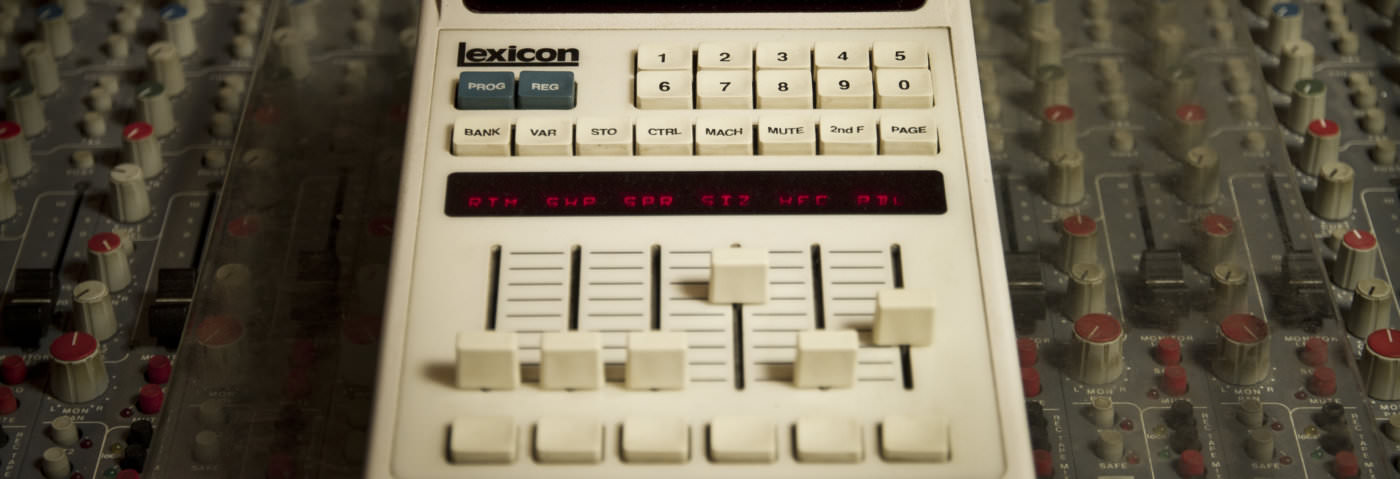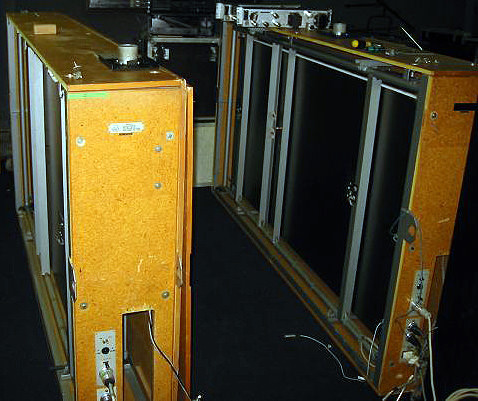EMT 140
Very few pieces of music production gear can claim to have reigned supreme as the industry standard for close to 60 years. Elektro-Mess-Technik’s model plate reverb might just be the closest thing we have to a holy grail of reverberation. Launched in 1957, this humongous beast is the first port of call for countless high-budget studios. For the rest of us who can’t afford the real thing, the 140 is still a watchword for top quality plate reverb in emulated software form.
Invented by EMT founder Wilhelm Franz, the 140 is the archetypal plate reverb. Plate reverbs, as the name suggests, are based around a large metal plate suspended on springs. A transducer attached to the plate plays back the audio signal from the input, causing it to vibrate in sympathy. Pickups on the side of the plate convert the movement back into audio signals. The result is a surprisingly realistic approximation of natural reverberation. Later EMT models even added stereo outputs (still with a mono input) for increased realism.
The 140 was a revolutionary design in the late 1950s, but the fact that it’s still so useable to this day is testament to the quality of the design. It’s a no-brainer for vocals, snares and claps. An original 140 isn’t prohibitively expensive, but given the size and the weight of the plate enclosure – not to mention its susceptibility to vibration – it’s not a particularly practical option unless you have a large enough studio to do it justice. Start instead with Universal Audio’s officially licensed emulation.
An honourable mention must also go to the 240, one of EMT’s later models. Released in the early 1970s, the 240 is a much smaller unit which uses a gold foil in place of the EMT 140’s steel plate.


03.00 PM
Excuse me but where is the Midiverb II at? What kind of dance music producer has a room for a plate reverb.
08.34 PM
Lumping the Space Echo in with reverbs seems to be pushing it a bit. It’s a great unit, but…
Also worth mentioning are the dirt-cheap plugins from ValhallaDSP (which borrow a lot of techniques from both Lexicon and Eventide), and the more expensive ones from 2CAudio.
02.34 PM
makes me laugh how people always get so mad at these features. guys, they’re just attack’s choices. if you don’t agree, write down your own list on a piece of paper and look at that instead. it’s hardly as if it’s some kind of official ranking, plus there’s a lot more to read here than just the names of 10 reverbs. maybe if you read it you’d realise they actually mentioned the midiverb AND the fact that most people don’t have room for a plate so should buy the plugin instead.
eric, i kind of agree with your point on the space echo but they are absolutely awesome for reverb as well as delay effects. even the delays are so messy and organic that it isn’t really delay as most people think of it these days. i got to borrow one off a friend for a while and what i actually liked it most for was a short reverb-style effect on vocal samples.
i also agree that the valhalla reverbs are excellent
10.16 PM
This is an unusually random feature from Attack…so few of these devices are really relevant to dance music eg the Lexicon 224…or EMT 140 (a vintage plate!)…’Acoustic space’ followed by a Bricasti! Its just all over the place…and honestly is that really relevant for dance music producers?
Here is my list:
2cAudio Aether
Valhalla Vintage Verb
Valhalla Shimmer
Relab 480
Eventide Black Hole pedal
Strymon Big Sky pedal
Eventide H3000 Rack unit
Roland Space Echo vintage delay
11.44 PM
Strymon Bluesky should’ve been in there